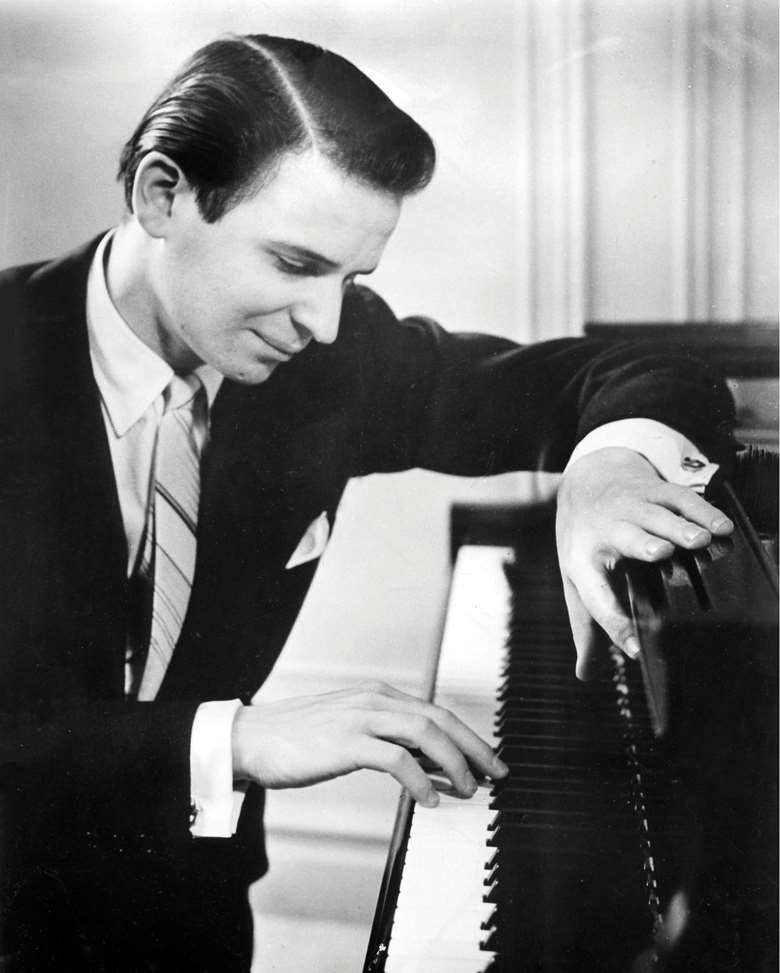Icon: Byron Janis
Jeremy Nicholas
Wednesday, March 20, 2024
Jeremy Nicholas pays tribute to one of the great American pianists, who in some ways surpassed even his teacher the legendary Vladimir Horowitz

The great American pianist Byron Janis has died at the age of 95. As a tribute, we republish below an overview of Janis's career by Jeremy Nicholas which originally appeared in the August 2016 issue of Gramophone...
It’s unlikely if you’re given a name like Byron Janis that you will become a bus conductor or a farmer or a tax inspector. While you need not have swum the Hellespont (now the Dardanelles) or fought for Greek independence, there is something inherently glamorous about the name Byron, attached as it is in our subconscious to the image of the great Romantic poet. And in the 1950s and ’60s there were few more glamorous pianists around than Byron Janis.
Of the myriad pianists dubbed ‘a second Horowitz’, he had the greatest claim to the title – and not just because he was Horowitz’s first pupil and one of the very few people who ever studied with the great Russian. For many people, Janis brought the same high-octane thrill to many works that, paradoxically, his mentor never recorded: Rachmaninov’s First and Second Concertos, Prokofiev’s Third, Liszt’s First and Second Concertos and Totentanz, and Strauss’s Burleske, to name but a few of his finest discs (mainly for RCA and Mercury) conducted by such luminaries as Fritz Reiner, Charles Munch, Kirill Kondrashin and Antal Dorati. Even in repertoire that was ‘owned’ by Horowitz, Janis could equal and in some ways surpass him, as illustrated by the several recordings he made of Rachmaninov’s Third Concerto. A YouTube clip of the third movement in a studio recording from the 1960s shows with what daring, accuracy, ease and confidence Janis played, and how his technique and keyboard address were completely different from Horowitz’s.
Janis was born in 1928 in McKeesport, Pennsylvania, to a Polish-Russian family who had shortened their name of Yankilevitch to Yanks when they immigrated to America. By the time he was 15, his name had been changed from Byron Yanks to Byron Jannes and again to Byron Janis. At the age of eight his parents took him to New York to play for Josef and Rosina Lhévinne, who taught him for a while before passing him – because of their concert schedule – to Adele Marcus, with whom he studied for six years. But Janis’s career very nearly did not happen at all: when he was 11 he accidentally pushed his left hand through a glass door, severing the tendons in the little finger, leaving it permanently numb.
Having made his orchestral debut with the NBC Symphony Orchestra at the age of 15 in Rachmaninov’s Second Concerto, he played the same work shortly afterwards in Pittsburgh conducted by the 14-year-old Lorin Maazel. It was at this concert that Horowitz first heard him. Recognising a kindred spirit, he invited Janis to study with him in New York. These weekly lessons took place over three years, during which time Horowitz forbade him from studying with anyone else. The impressionable teenager lived and breathed Horowitz’s inimitable style and sound. ‘At that time,’ Janis recalled, ‘I did not realise what was happening. I was becoming a copy of Horowitz.’
In his disarmingly frank autobiography, Chopin and Beyond: My Extraordinary Life in Music and the Paranormal (2010), Janis reveals that he had an affair with Wanda Toscanini (Mrs Horowitz) and then married a sister of Clarissa Dickson Wright (famous in the UK as one of the celebrity TV chefs known as Two Fat Ladies). His second (and present) wife, Maria, is the daughter of Hollywood legend Gary Cooper.
When Janis was 20, Horowitz stopped his lessons and Janis embarked on a career as a touring virtuoso. In 1960 he became the first American to tour Russia on a cultural exchange, and during a second visit in 1962 he stunned his hosts by playing in one concert the Schumann Concerto, Rachmaninov’s First and Prokofiev’s Third, followed by an encore of the last movement of Tchaikovsky’s First. At the height of his career in the late 1960s, he was playing more than 100 concerts a year. Janis’s memoir, as well as detailing the many paranormal events he has experienced during his life, tells the story of how in 1967 he unearthed in a French chateau two previously unknown Chopin manuscripts in the composer’s hand (the waltzes Op 18 and Op 70 No 1).
Then tragedy struck. By some cruel twist of fate, of the three great American pianists born in 1928, Leon Fleischer and Gary Graffman lost the use of their right hands, and from 1973 onwards Janis began suffering from psoriatic arthritis in his hands and wrists. Although in considerable (and increasing) pain, he gallantly continued to play without the audience knowing of his condition. Operations, failed remedies, large doses of drugs and the fear of no longer being able to play led, understandably, to a long period of depression. Janis did not go public until 1985, after a concert at the White House. He recovered sufficiently to release two CDs, one in 1996 the other in 1998, and is now an ambassador for the Arthritis Foundation in the US.











